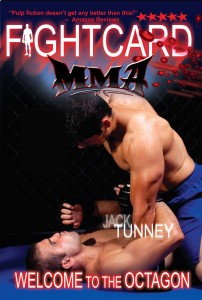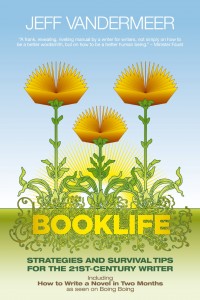A novelist, screenwriter, television personality and half the creative genius behind the Fight Card series, Paul Bishop recently finished a 35 year career with the Los Angeles Police Department where he was twice honored as Detective Of The Year. He continues to work privately as a deception expert and as a specialist in the investigation of sex crimes. His books include the western Diamondback: Shroud Of Vengenace, two novels (Hot Pursuit / Deep Water) featuring LAPD officers Calico Jack Walker and Tina Tamiko, the thrillers Penalty Shot and Suspicious Minds, a short story collection (Running Wylde), and five novels in his L.A.P.D. Detective Fey Croaker series (Croaker: Kill Me Again, Croaker: Grave Sins, Croaker: Tequila Mockingbird, Croaker: Chalk Whispers, and Croaker: Pattern of Behavior). His latest novel, Fight Card: Felony Fists (written as Jack Tunney), is a fast action boxing tale inspired by the fight pulps of the ‘40s and ‘50s. His novels are currently available as e-books.
Cultural influences, tough economic times, and the hope and appeal offered by fight fiction …
Paul Bishop
The fight fiction genre has become an integral part of our cultural history – especially when economic times have been as tough as the character’s in a fight fiction tale.
Even before the explosion of fight fiction stories in the pulps of the ‘30s and ‘40s, Jack London was penning fight stories for the masses, such as his classics A Piece of Steak and The Abysmal Brute, among others. Feeding the need of the everyman to rise above his daily struggle for survival through vicarious fight entertainment, London’s fight tales were devoured.
London learned to box by sparring with his friend Jim Whitaker, and his love of the sport never waned. Wherever his wanderings took him, London always had a pair of boxing gloves, always ready to mix it up with any challenger. Most often, however, London’s regular sparring partner was his wife, Charmian Kittredge, with whom he routinely sparred.
Even on the Snark, travelling to the Solomons Islands, or on the Tymeric from Sydney, Australia, to Ecuador, or the Dirgo from Baltimore to Seattle in 1912, Jack and Charmain would put on their bathing suits and square off for an hour of sparring before throwing buckets of salt water on one another. Because he couldn’t strike back against Charmain as he would against another man, London developed an almost impenetrable defense, making him more than a challenge for any man he toed the line against.
London hated bullfighting and hunting, considering them without any sporting interest. However, the specific mano-a-mano science of boxing fascinated him. He always tried to attend professional fights as a reporter in order to secure a ringside seat.
In 1905, he wrote one of his most highly regarded fight stories, The Game, which was serialized in Metropolitan Magazine. The story caused a clamor when critics claimed a fighter could not be killed by hitting his head on the canvas. London’s reply was a claim to have seen it happen in the West Oakland Athletic Club.
Eventually, lightweight champion of the world, Jimmy Britt, settled things in the San Francisco Examiner when he was quoted as saying, “With … nothing more to guarantee me that he knows The Game than his description of his fictional prize-fight, I would, if he were part of our world, propose or accept him as referee of my impending battle with Nelson.”
During the height of the pulp era on the ‘30s and ‘40s, Robert E. Howard was another writer who banged out fight stories while also engaging in the pugilistic arts. Even though as a child he was bookish and intellectual, in his teen years he took up bodybuilding before eventually entering the ring as an amateur boxer.
Best known as the creator of Conan The Barbarian, Solomon Kane, and other sword and sorcery characters, Howard had a lifelong interest in boxing, attending fights and avidly following the careers of his favorite fighters. He also claimed to considered his fictional fight tales – especially The Iron Man, and the adventures of Sailor Steve Costigan, the lovable, hard-fisted, and innocent semipro pugilist who regularly squared-off against dastardly villains in exotic ports of call – as among the best of his works.
Howard’s boxing tales and hundreds of other two-fisted stories flourished in the fight pulps such as Fight Stories Magazine and Knockout Magazine, helping a generation of readers to fight through the Great Depression and the tough years to follow.
During the ‘50s, the printed tales of fight fiction gave way to a wider appreciation of live bouts. Television brought those fights into American living rooms for all to see. However, as the public became jaded by the scandal of fight fixing and the real life encroachment of organized crime into the fight game, a new realism in fight fiction wrapped its hands with tape and pulled on battered leather gloves illegally loaded with lead.
Published in 1958, The Professional written by W. C. Heinz cast a harsh reflection of the seedy circus-like atmosphere of boxing with its assorted hangers-on, crooked promoters, and jaded journalists. With his lean sentences, rough-and-ready dialogue, dry wit, and you-are-there style, Heinz brilliantly used the cynical eyes of fictional sports writer Frank Hughes to recount the trials of middleweight Eddie Brown and his crusty trainer, Doc Carroll, as Brown prepares for a championship fight.
Heinz’ novel is still as revered today as it was when Hemingway – himself an amateur pugilist and teller of fight stories such as Fifty Grand and A Matter of Colour – declared it “the only good novel about a fighter I’ve read and an excellent novel in its own right.”
Like the fight fiction novels to be published in the ‘40s and 50’s. movies of those eras also reflected the public’s growing disenchantment with boxing in the ‘50s. Humphrey Bogart’s last screen appearance in 1956’s The Harder They Fall – based on Budd Schulberg’s 1947 novel – dramatizes a thinly disguised account of the real life boxing scandal involving champion Primo Carnera. Bogart’s character, Eddie Willis, was based on the career of boxing writer and event promoter Harold Conrad. The book and film pulled no punches, showing brutal and brutish fight scenes coupled with the cynical and humiliating treatment of fighters by those surrounding them – which further reflected the middle class workers’ own feelings of punitive treatment by upper management.
Finally, in 1969, the noir edge of fight stories was capped with the publication of Fat City. Written by Leonard Gardner, Fat City, set in the small-time boxing circuit of Stockton, California in the late ‘50s, became an acclaimed film from director John Houston in 1972. As in The Professional and The Harder They Fall, the message of Fat City was a harsh metaphor for the impossibility of a public striving to get ahead while surrounded by forces determined to derail you at every turn.




